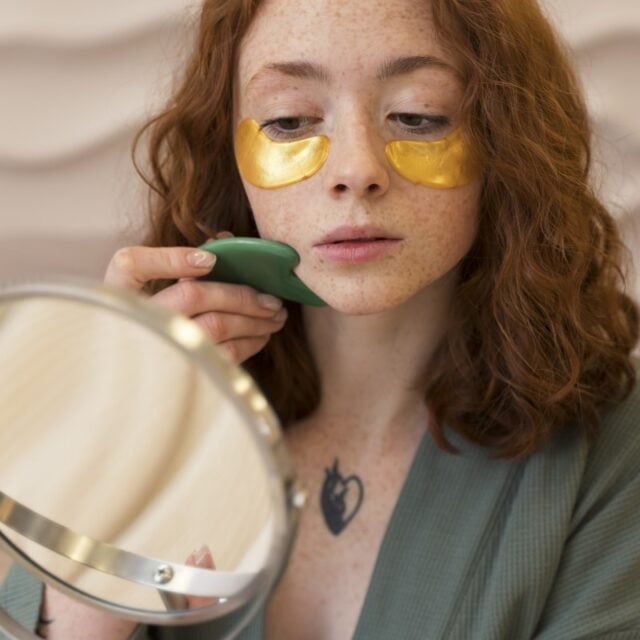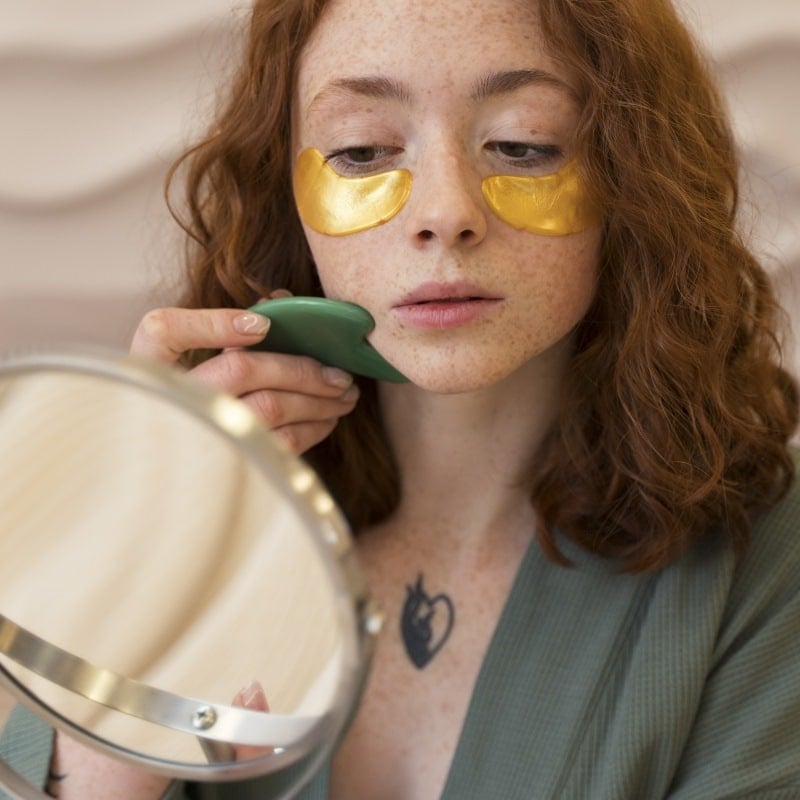
This is not just a theoretical question for brands and formulators. Misclassification can have serious effects on businesses and the law, such as product recalls, fines, or loss of access to the market. The European Commission’s Manual on the Scope of Application of the Cosmetics Regulation gives manufacturers detailed explanations and examples of borderline situations to help them understand these issues.
In this blog, we’ll look at how the EU defines borderline cosmetics, with a focus on those that are meant to get rid of dark circles and bruises. You’ll find out what standards authorities use to decide how to classify a product, what makes a cosmetic claim different from a therapeutic claim, and how Certified Cosmetics’ CPSR service and borderline cosmetic assessment can help make sure your product meets all the rules before it goes on the market.
The Legal Framework: What Defines a Cosmetic Product
According to Regulation (EC) No 1223/2009, a cosmetic product is any substance or mixture applied to external parts of the human body with the purpose of cleaning, perfuming, changing the appearance, protecting, or keeping the skin in good condition. This definition highlights a fundamental principle: a cosmetic product acts on the surface of the skin and aims for an aesthetic outcome, not a physiological change.
For instance, an eye cream that reduces puffiness and gives the skin a brighter, fresher appearance fits the cosmetic definition because it aims to change the appearance rather than modify a biological process. However, a cream that claims to heal bruises, stimulate microcirculation, or restore damaged capillaries exceeds this boundary. Such a claim implies a therapeutic action and would likely place the product outside the cosmetic scope. The distinction is subtle but critical, and it forms the basis of the cosmetic product classification EU process.
The Borderline Manual and Its Guidance
The Borderline Manual from the European Commission is the main guide that competent authorities use to decide if a product is a cosmetic, a medicine, or a medical device. Section 3.3.17 of the document clearly lists “products to reduce dark circles under the eyes, bruises, or blue spots” as examples of borderline products that need extra care.
The manual makes it clear that classification is based on the main purpose and claims. A cream that claims to “improve the look of tired eyes” may be considered cosmetics because it deals with a cosmetic problem. On the other hand, a product that says it can “stimulate blood flow” or “heal bruises under the eyes” is making a claim about how the body works, which makes it medicinal. The European Commission says that these kinds of evaluations should be done on a case-by-case basis, taking into account all factors, such as the formulation, mode of action, claims, and presentation.
This means that two products with the same ingredients could be in very different categories based on how they are packaged. One product that is marketed as “a cosmetic brightening eye gel” might stay in the cosmetic field, while another that is marketed as “a treatment for post-traumatic bruising” would probably need to be classified as a medicine. The line is thin, but crossing it has big effects on the rules.
Evaluating the Function, Mode of Action, and Claims
When authorities evaluate Bruises Cosmetics or under-eye bruise treatment cosmetic products, they look at three main aspects: the intended function, mode of action, and claims.
A cosmetic product functions by acting on the surface of the skin, for example, by reflecting light, moisturizing, or covering discoloration to create the appearance of improvement. The effect is external and does not alter physiological mechanisms. On the other hand, a medicinal product operates within the body’s biological systems, such as by repairing tissue or influencing blood circulation.
Claims are equally critical. Phrases like “reduces the appearance of dark circles” or “visibly brightens the under-eye area” are acceptable for cosmetics, while claims like “heals bruises” or “stimulates blood flow to the capillaries” clearly indicate a therapeutic effect. Even subtle differences in wording, for instance, “treats puffiness” versus “improves the look of puffiness”, can shift classification. Formulation also plays a role. Ingredients such as vitamin K, arnica extract, or caffeine are common in products for the eye area. Their concentration and mechanism of action determine the classification. A low concentration used for visual improvement may fit within cosmetics, but higher concentrations intended to restore or modify biological function push the product toward medicinal classification.
The Importance of Presentation and Marketing Context
Another thing that the European Commission talks about is presentation, or how the product is marketed and described. The way a product looks, sounds, and even where it is on the shelf can affect how it is classified. For instance, using medical images, anatomical diagrams, or claims about healing can make it seem like a drug works.
Brands should keep in mind that how a product is classified depends on more than just its formulation. It also depends on the story that goes along with it. If a cream is marketed as a way to treat or recover from something, it could be considered medicinal even if it is safe and made for cosmetics. So, it’s very important to be careful with how you word your claims and design your labels. The goal is to make sure that the message stays within the aesthetic range, which means making things look better without suggesting that they have medical benefits. To avoid misclassification and make sure that companies are fully ready for the rules, Certified Cosmetics helps them make sure that their claims, packaging, and marketing communications are all in line with the EU cosmetic compliance framework.
Practical Classification Examples
| Product Type | Example Claim | Likely Classification |
| Eye cream that “reduces visible dark circles and puffiness” | Cosmetic purpose focused on appearance | Cosmetic Product |
| Gel that “heals bruises under the eye” or “improves microcirculation” | Restorative or therapeutic purpose | Medicinal Product |
| Roll-on that “soothes and brightens tired eyes” | Cooling, aesthetic improvement only | Cosmetic Product |
This comparison highlights that small wording changes can significantly impact how the borderline cosmetic medical product EU authorities perceive a formula.
Certified Cosmetics Services for Borderline Product Compliance
At Certified Cosmetics, we understand that determining whether a product qualifies as cosmetic can be complex. Our regulatory experts specialize in navigating these grey zones through a structured compliance process that includes:
- CPSR Service (Cosmetic Product Safety Report): A scientific evaluation of safety data, ingredients, and exposure scenarios to confirm that your formulation meets EU cosmetic requirements.
- Borderline Cosmetic Assessment: An expert review analyzing your claims, mode of action, and formulation to ensure correct classification before submission.
- EU Cosmetic Product Classification & CPNP Notification Support: Complete assistance in preparing compliant documentation, registering your products, and aligning them with Regulation (EC) No 1223/2009.
- Label and Claim Review: Verification that marketing materials, packaging, and online content respect the boundaries of cosmetic claims and do not imply medical effects.
Through this integrated approach, Certified Cosmetics helps brands confidently position their Reduce Dark Circles and Bruises Cosmetics within the cosmetic category, ensuring consumer safety and legal compliance while maintaining the marketing appeal of visible results.
Key Insights for Manufacturers and Formulators
Manufacturers should start thinking about risk early on in the product development process to make sure that things are classified correctly. Check the purpose, ingredients, and claims of your product against the rules. Always write down why you did something and keep the Product Information File (PIF) up to date with safety data.
Getting professional help with borderline cosmetic assessment and CPSR service early on can help avoid misclassification and problems with compliance in the future. Keep in mind that even if a product looks safe, false claims could lead to authorities reclassifying it, which could stop sales across the EU. The goal is not just to follow the rules, but also to protect the brand by being honest and following the law.
Frequently Asked Questions
Q1. Are products that reduce dark circles and bruises automatically cosmetics?
No. Only if their purpose is limited to improving appearance. If the product claims to heal, treat, or restore physiological functions, it falls outside the cosmetic scope.
Q2. What ingredients are most common in under-eye bruise treatment cosmetics?
Ingredients such as caffeine, vitamin K, and plant extracts like arnica or chamomile are popular for their aesthetic effects. However, their concentration and purpose determine whether they remain cosmetic or become medicinal.
Q3. Can I make both cosmetic and therapeutic claims for one product?
No. Under EU law, products must have a single, clearly defined purpose. Combining cosmetic and therapeutic claims is not permitted and risks reclassification.
Q4. How can Certified Cosmetics support compliance for borderline cases?
Certified Cosmetics offers end-to-end EU cosmetic compliance support, including CPSR service, borderline cosmetic assessment, and label review, ensuring your product stays within the correct legal definition before market launch.
Conclusion
Many products that say they will reduce dark circles or make bruises less noticeable are actually a mix of cosmetics and medicine. What they are finally get classified as depends on things like their claims, how they work, what they contain, and how they are marketed. Cosmetics in the EU are only products that are meant to make you look better without changing how your body works.
For manufacturers and brands, it is important to know these differences to stay in compliance and keep customers’ trust. Our knowledge of EU cosmetic product classification and borderline cosmetic medical product EU assessments at Certified Cosmetics makes sure that your products meet the highest safety and regulatory standards. We give you the information and paperwork you need to confidently bring your new cosmetics to the EU market, whether you’re writing a CPSR service report or checking your claims before launching them.

